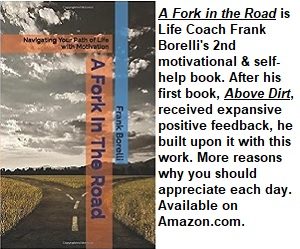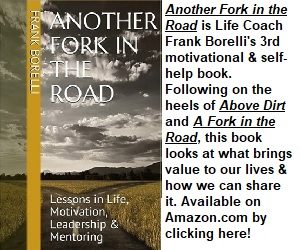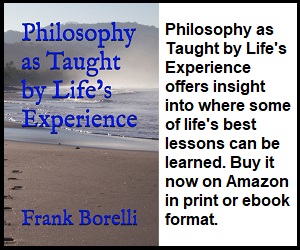“Every man is born as many men and dies as a single one.” – Martin Heidegger. When I saw this quote come up in my social media feed it stopped me. I had to read it twice and then a third time. I had to think about it… what does it mean. I finally realized that it had to do with potential and choices and results. I’ve previously written about “a fork in the road,” and how that represents (to me) the choices we make. They are many and they are constant and every one of them helps to shape our life. How we shape our life both impacts who we become and is impacted by who we become. We shape our life and our life shapes us. But when we’re born, what is “many men”? And when we die, how has that many been resolved into only one?
 When a child is born – and make no mistake, the quote applies to both genders – that child has endless paths of opportunities in front of them. Obviously, they make no choices for themselves. Their parents or caregivers simply provide for them… but some of the choices they might have are already limited sometimes. Children born into financially challenged families, or put up for adoption at birth and ending up in foster care… these children don’t have as many easily accessed options as children born into more financially comfortable families.
When a child is born – and make no mistake, the quote applies to both genders – that child has endless paths of opportunities in front of them. Obviously, they make no choices for themselves. Their parents or caregivers simply provide for them… but some of the choices they might have are already limited sometimes. Children born into financially challenged families, or put up for adoption at birth and ending up in foster care… these children don’t have as many easily accessed options as children born into more financially comfortable families.
At a very young age though, even as young as two or three years of age, the child’s values begin to build. Those values are most often built simply as accepted right or wrong beliefs based on the culture around the child. The parents, siblings, other relatives and even the community culture impacts the child’s values and helps to shape them. As those values grow and the child’s basic belief structure is developed, they begin to make some of their own choices, with the “some” becoming more and more as they get older.
 As they reach school age, even maybe just preschool, some of their choices can begin to have long term impacts – and we rarely ever think about it. The reality is that there’s little we can do to coach them at that point because they have difficulty articulating what they’re thinking and they aren’t capable (yet) of abstract thought relationships. In their mind, cartoons represent the real world, school is where they meet their friends to play and learning isn’t something they’ve even seen the structure or discipline in yet.
As they reach school age, even maybe just preschool, some of their choices can begin to have long term impacts – and we rarely ever think about it. The reality is that there’s little we can do to coach them at that point because they have difficulty articulating what they’re thinking and they aren’t capable (yet) of abstract thought relationships. In their mind, cartoons represent the real world, school is where they meet their friends to play and learning isn’t something they’ve even seen the structure or discipline in yet.
Realize that the games they choose to play might promote different mental skills. As a result of a completely innocent choice they make to play game A instead of game B, they end up developing their math skills a bit more that day instead of their reading skills (just as an example). We have no way of knowing what the long term impact is of that choice, and it’s NOT a conscious choice about affecting their future.
But going back to the beginning of this entry, any choice they make that affects their future limits, in some way, their options. By empowering one thing, they lessen the potential value or possibility of something else. That child, born with untold millions of options ahead of them, can reduce that number of choices with every decision made. We might go from a billion potential paths to half a million by making a single decision. The farther we get through life, the more decisions we make, the more narrow our selection of options becomes.
 For example, when I graduated from high school, I chose to enlist in the Army. I wasn’t simply choosing between “enlist” or “college,” but between “enlist in one of the branches of service, or go to one of four colleges, or pursue acceptance to West Point.” So, I actually made a single choice out of ten options: I enlisted in the U.S. Army. In doing so, I removed every option any of those other choices would have provided – and I had no way of knowing at the time, which of those options offered the best long term life’s development or quality of life.
For example, when I graduated from high school, I chose to enlist in the Army. I wasn’t simply choosing between “enlist” or “college,” but between “enlist in one of the branches of service, or go to one of four colleges, or pursue acceptance to West Point.” So, I actually made a single choice out of ten options: I enlisted in the U.S. Army. In doing so, I removed every option any of those other choices would have provided – and I had no way of knowing at the time, which of those options offered the best long term life’s development or quality of life.
When I got out of the Army I had a few career options ahead of me and I had to make a choice of which to pursue. I can specifically remember three job options at one point and I selected one. In doing so, I removed any options the other selections might have led me to later in life.
This process goes on throughout the course of our life, and without even realizing it we also have the various potential paths of our life impacted – expanded or limited – by those we invite to play major roles in our life. Your spouse affects your options and choices. Having children impacts your choices and options. Your career path impacts your choices and options. When you retire and under what conditions you retire – that impacts your choices and options.
And then as we near the end of our lives, it’s time to realize that everything we’ve done throughout the course of our life has led us into being who we are. That person we’ve become and will die as, was shaped by our choices; built by our decisions; crafted from the effort we put into exercising our values and choosing our belief structures. The person we are, at that point, represents the culmination of all of our choices; all of our decisions; all of our pursuits of knowledge, training, growth, relationships and more. As we pass from this life to the next, every choice has been removed; every option expended. We are finally only the single person we lived our life to be.
It’s worth being aware of. Some don’t like to think about the reality of our mortality. Death is the inevitable end of all of us. But who we are in the moment of our passing is very much up to us and between now and then there are still countless thousands, if not millions, of options open to you, each dependent on the one you made before. You might want to keep that in mind as you make some of the seemingly simply decisions of low importance. What it leads to might be more important than you can imagine.
